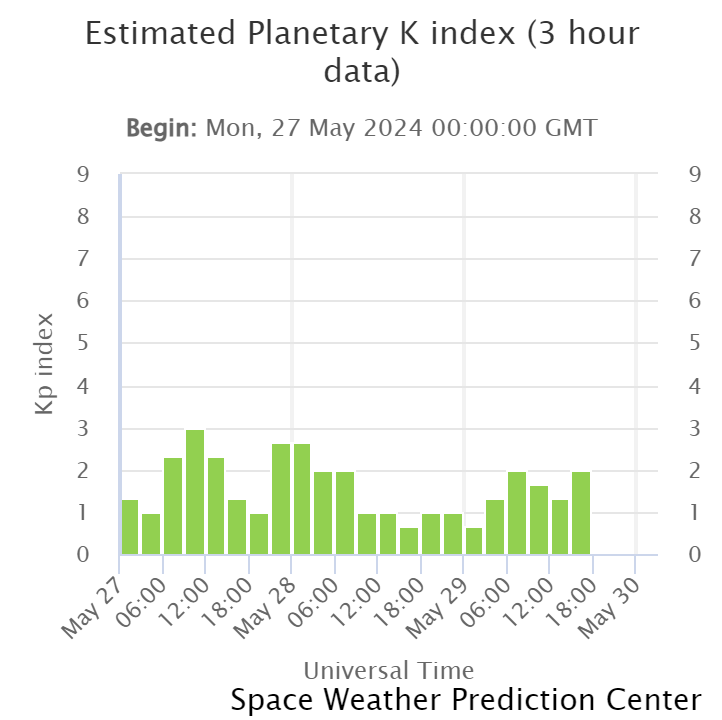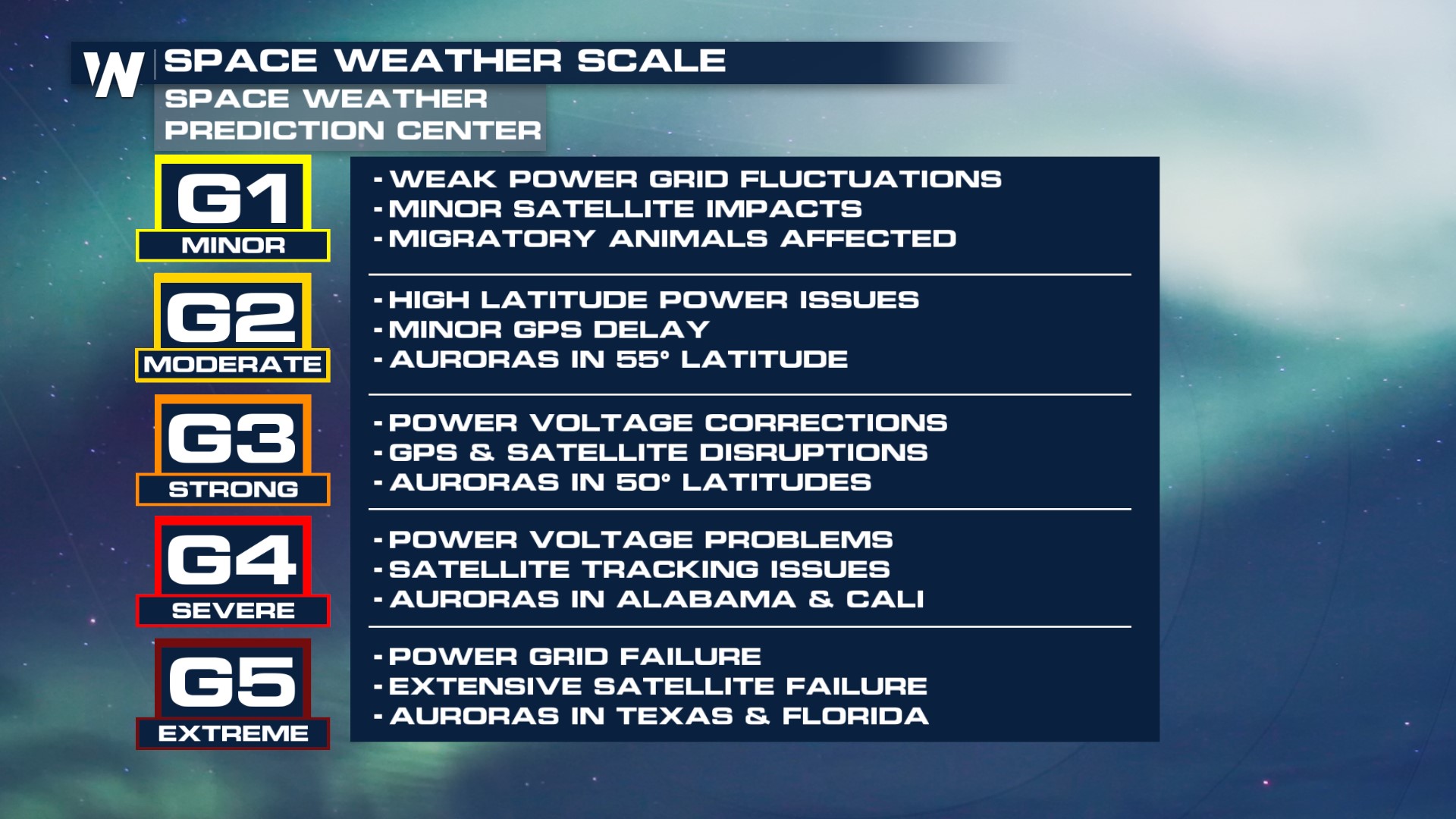Region Responsible for Early May Aurora Puts off Flares Wednesday Morning
Above - May 10th Aurora Borealis visible over Badlands, N.P. in South Dakota
Remember the vivid aurora visible all the way to Florida in early May? The region of the sun responsible for solar flares and coronal mass ejections (CMEs) that caused the aurora is back on the scene. Formally region 3664 (and now known as 3697) has survived a solar rotation and produced a strong flare early Wednesday morning. Right now, planetary impacts are registering as low. According to the Space Weather Prediction Center, because of the "far SE location, energetic particles could take some time to arrive in the near-Earth environment."

The Space Weather Prediction Center will monitor the area for potential additional flares that could impact Earth's magnetic field. No geomagnetic storm conditions are anticipated for the next three days, and the aurora will be limited to the far northern latitudes. The May 10-11 solar storm was rated a G5 on the solar scale and was the strongest in over 20 years. On average, we see G5 conditions 4 times every 11 years, or roughly once every 2.5 years.
 So what is a "solar rotation"? The sun, like Earth, rotates on its axis, but instead of a 24-hour cycle, it is roughly every 27 days with different latitudes rotating at different day lengths that is because "the Sun is a ball of gas/plasma, it does not have to rotate rigidly like the solid planets and moons do [and] the Sun’s equatorial regions rotate faster (taking only about 24 days) than the polar regions (which rotate once in more than 30 days)" according to NASA. The difference in rotation speed was discovered by watching sunspots on the Sun's surface.
So what is a "solar rotation"? The sun, like Earth, rotates on its axis, but instead of a 24-hour cycle, it is roughly every 27 days with different latitudes rotating at different day lengths that is because "the Sun is a ball of gas/plasma, it does not have to rotate rigidly like the solid planets and moons do [and] the Sun’s equatorial regions rotate faster (taking only about 24 days) than the polar regions (which rotate once in more than 30 days)" according to NASA. The difference in rotation speed was discovered by watching sunspots on the Sun's surface.
Stay with WeatherNation for the latest on space weather impacts and potential aurora borealis viewing based on the Sun's activity!